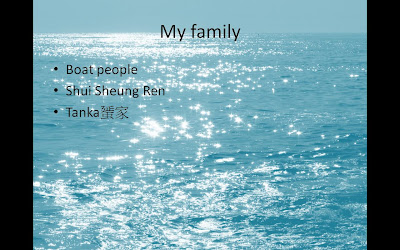Monday, May 3, 2010
Reflections on Contemporary Art
Wednesday, April 21, 2010
Tuesday, April 20, 2010
lift sucks!!

Project introduction
1.Since Hong Kong is a very tense city, citizens are under enormous pressure keeping up with the fast-advancing environment.
2.We hope to lift users would slow down .
Project procedure



 Result
Result


How does our work relate to our course?
HOME
Quotation:“A home can thus signify an enclosed dwelling or shelter which is familiar, comforting and secure.”
“A home does not simply specify where you live; it can also signify who you are and where you ‘belong’.”
“A house contains evidence of the intimate relationship between space and time.”
“To live is to leave traces.” – Walter Benjamin
Through decorating on the interior part of the lift (I.e. regarding as a bedroom environment), the lift users actually will be
nrelaxed more when entering to their “bedrooms”
nimmersed by the harmonious environment
PLACE
Quotation:“Site-specificity means that what the work looks like and what it means is dependent in large part on the configuration of the space in which it is realized.”
“The symbolic value of a place reflects an accumulation of psychic meanings.” For us, this project is the best way to remind the lift users about the problem while being in a site specific works. (e.g. just like the LIFT we suggested to use in this work)
TIME
Quotation:“Time has structure; its everyday elements include duration, speed, rhythm, and direction … a number of contemporary artists are controlling, altering, fracturing, and dissolving the structure of time in their work.”
“Another way that artists in the ‘time arts’ alter the structure of time is by speeding up or slowing down the tempo of a programme … More than speed, however, artists are interested in exploring slowness, perhaps as a contrast to the frenzied pace of contemporary society.”
Especially, what we want to highlight here is the changing rhythm of some artworks. As we mentioned, one of our important aims is slowing down the way of using lift, it indeed extremely matches with the ideas of some contemporary artists nowadays.
Joseph Beuys, who created the term Social Sculpture illustrating his idea of art's potential to transform society. “Everyone is an artist.”
That means, if an artwork includes human activity, it will strive to structure and shape the society.
Public Art
Definition – What is Public Art?
The term public art refers to artists and craftspeople working within the built, natural, urban or rural environment. It aims to integrate artists' and craftspeople's skills, vision and creative abilities into the whole process of creating new spaces and regenerating old ones, in order to imbue the development with a unique quality and to enliven and animate the space by creating a visually stimulating environment.
Working with artists and craftspeople offers an opportunity to design schemes, which go beyond the purely functional and create places which reflect the life and aspirations of the district, country or region.
Public Art in Hong Kong
Brief Review on some Hong Kong Artists
80s ~ Serious and comprehensive projects of public art began in Hong Kong with large scale commercial and residential projects
The relation of public art and public life in Hong Kong
Two examples which reveal the potential of art in the mediation of public discourse and its civil order
1995: The display of “New Man” caused contestation with the final High Court ruling that sculpture is not under such a command
1996: Artist Pun Sing-lui destroyed the nose of the historic statue of Queen Victoria in Victoria Park and poured red paint over the piece
Site of Public Artworks in Hong Kong
1.Public buildings and parks ranged from civic centers, libraries, theatres ~ “Sculpture Walk” in East Island
2.Concourses and passages of public transportation systems~ MTR, Airport Express and the Airport are the public places with intensive flow of people and accessed by the widest range of audiences from local citizens to tourists 3.Schools and public estates
~Limited spaces in Hong Kong
~Lots of regulations or rules for different parties/ institutions/ communities : They are HARSH and insisted on their conservative rules even though providing any supporting proposal or any interesting plans to them
Artists may or may not want to make political statements through their works, but when those works become public installations, they take part in considerations often outside of the work itself
Public art can't help but be caught up in political sensitivities
References
Bibliography
Robertson, Jean, and Craig McDaniel (2005) Themes of Contemporary Art: Visual Art after 1980. Oxford: Oxford University Press, 2004.
Websites
1.http://www.mtr.com.hk/eng/whatsnew/art_architecture_popup_12.html
2.http://en.wikipedia.org/wiki/Social_sculpture
3.http://hk.wrs.yahoo.com/_ylt=A3xsaPxqZMNLeTgBDKPwzAt.;_ylu=X3oDMTByZGdnb2NpBHNlYwNzcgRwb3MDNQRjb2xvA2hrMgR2dGlkAw-/SIG=12onp4h7c/EXP=1271182826/**http%3a//www.bjreview.com.cn/culture/txt/2009-11/30/content_231753.htm
4.http://hk.wrs.yahoo.com/_ylt=A3xsaQWiesRLn3wAcmrwzAt.;_ylu=X3oDMTByZThiOGIzBHNlYwNzcgRwb3MDMgRjb2xvA2hrMgR2dGlkAw--/SIG=139gc60gu/EXP=1271254050/**http%3a//www.hkadc.org.hk/rs/File/info_centre/reports/200402_public_art_research_en.pdf



















